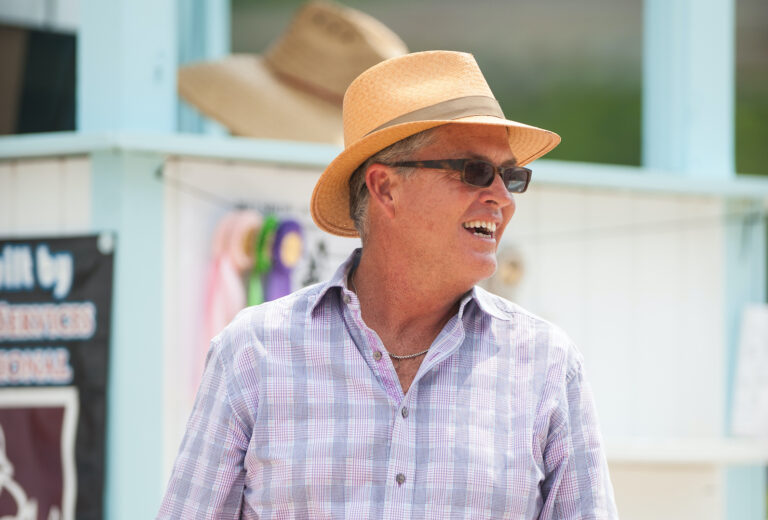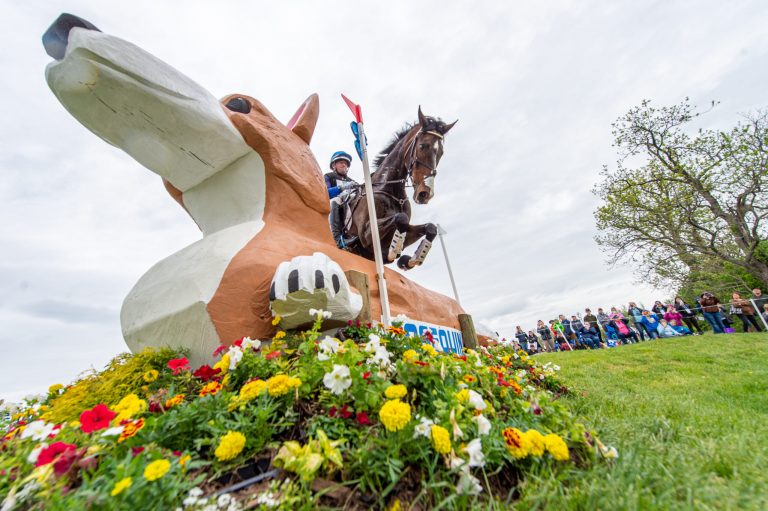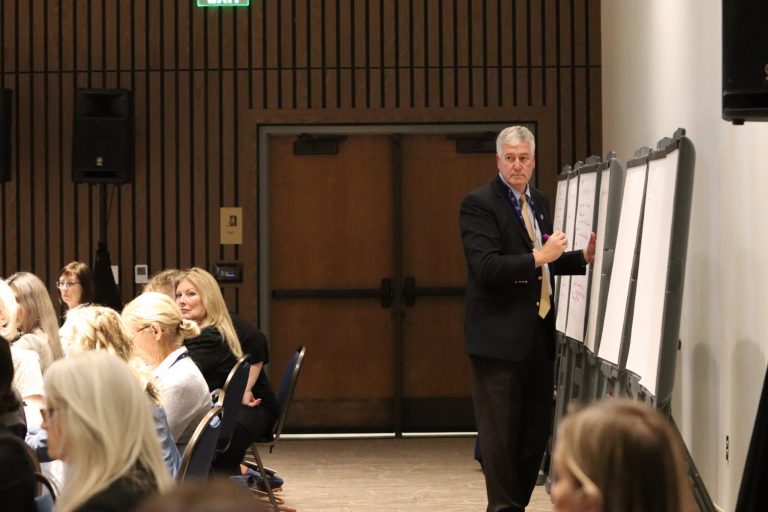One Tuesday morning I woke up and announced to the empty RV I was living in, “I’m in Florida. I’m at David and Karen O’Connor’s place! Bada-bing. Bada-boom!”
I turned the radio on. John Mayer greeted me, singing about past frustration and so-called problems.
I did a little dance.
Some days began like that; better ones ended like that. First on the agenda this day was I would finally get a chance to watch one of David’s lessons. He was teaching Waylon Roberts, son of Canadian Olympian Ian Roberts, and one of the most talented young riders my home country had yet seen. Around the O’Connors’ place, however, his shaggy brown hair and spectacles made him more famous as “Harry Potter”—he was a dead ringer. Waylon was one of those lucky few who looked more at home on a horse than on the ground.
I found David and Waylon in the dressage ring, which gave me a chance to sit in the shade—under a great live oak, out of the way—and watch. Live oaks were southern trees I hadn’t experienced before. They had fantastic, thick, twisting trunks and branches that provided shade (and ideal backdrops for photos). They were called “live” oak or “evergreen” oak because they stayed green all winter.
The first twenty minutes I sat underneath that old tree David didn’t say a single word. He slouched in his plastic chair, dusty cowboy hat pulled low, white sleeves rolled up, eyes like a cat watching a bird. He explained later that with the students he teaches regularly, he likes to just observe them for a while to see what they are working on, and to see if they are implementing what he taught them during their last lesson together. David’s system combined the best of both worlds: Sometimes he let the rider just ride. But he was also ready to give one-on-one instruction at any moment.
In his lessons, David tried to understand first what the horse was thinking, then what the horse was doing. Finally he studied what the rider had to do with both those things.
It seemed to me that the ambition of all trainers, whatever discipline, was to create a “submissive” horse—that is, the rider should tell the horse what to do, and the correct reaction should be immediate. The rider should not have to physically or forcibly move the horse. Instead, they should become one, as if the rider is the brain, and the horse is the body: The neurons fire, the feet start to move.
Later on I changed this word “submissive” to “cooperative” in my mind. Instead of a motorcycle that could go zero to sixty in three-point-four seconds, I imagined dancing with a girl. How I would like her to move with me. How even though I might be leading, I would like to show her off. And how I wanted her to be my friend.
I now use “ask” instead of “tell.” “Enthusiastic” instead of “excited.” “Should,” not “must.” I prefer “usually” to “always,” and I avoid “never.”
Unfortunately, cooperation between horse and rider is often not the case. The wires get crossed, the tail swishes, the ears go back—the horse does not understand. The rider kicks or pulls. Both become frustrated or anxious, maybe even scared.
It was David who pointed out to me that instead of forcing the horse to understand our human vocabulary, we should learn to speak the language of the horse. That was why every horse at the O’Connors’ was started in the round pen, learning to trust and respect, but also giving his handlers a chance to better understand him. Not just him in the way he moved, but him in the heart and in the mind.
Young horses were first ridden in only rope halters with horseman’s sticks to steer. No bridle! The sticks were used beside the horse’s head, not to hit, but to direct. The horses learned to move away from pressure. Or to be more precise, they learned what made pressure cease. They discovered that if they turned, the stick would disappear. They figured out that if they trotted, the legs at their sides would stop squeezing.
Beginning without a bit in the mouth allowed each horse to focus on going forward. A horse’s gums, tongue, and lips are some of the most vulnerable parts of his body on a physical level but also and especially on an emotional level. If a horse makes a mistake as he moves and trips or falls, he is more likely to learn from the experience if the rider is not interfering. On the other hand, if he stumbles or crashes with a rider, particularly if the rider is unbalanced on the reins and catches him in the mouth with a bit, he is more likely to be anxious.
Anxiety, it should go without saying (but doesn’t), is the enemy of learning.
For years David and Karen had a partnership with Pat Parelli and his wife Linda. There are videos that can be found online of the four of them co-presenting at horse expos around North America. In one David explains that so often we learn to compete before we learn to ride and we learn to ride before we learn to understand horses. In the video David is riding without a bridle. He’s not doing anything profound, but there are only a handful of people in the world that can make something so uncomplicated look so uncomplicated.
The first few weeks of watching the O’Connors work with their horses was like reading The Alchemist for the first time. Many professionals understand horses, but few try to teach others how to understand them. Mostly we are taught how to control horses. Fewer instructors still truly inspire us to learn how horses feel. Riders lucky enough to acquire an understanding of how horses think usually do through “feel” or osmosis. But I was seeing that it was something that could be taught.
There are exceptions, but how a horse reacts to different situations can often be explained. A person’s reactions to grief are commonly predicted by the acronym DABDA—denial, anger, bargaining, depression, acceptance. When horses encounter something new, they often go through predictable steps—fear, curiosity, playfulness or dominance, acceptance, indifference. When we don’t understand this equine thought process we might take a horse that is scared of water and say, “Accept this!” But without giving him time to put his whiskers on it, and to be playful and paw the surface, we rarely achieve real acceptance. And that can come back to haunt us.
Hey, I thought after listening to David, this thing—this horse deal—this is about more than just riding. There is a bigger picture here, I can feel it. If I have a good bike I can ride it. I can learn to trust it. Learn to respect it. Maybe I can even love my bike. But my bike cannot learn to trust me back. Or respect me. My bike cannot like me.
I started to think, Maybe this is what horsemanship is all about.
This excerpt from In the Middle Are the Horsemen by Tik Maynard is reprinted with permission from Trafalgar Square Books (www.horseandriderbooks.com).
For more from Tik, check out:
• Earning the Trust of a Thoroughbred, in which he shares how he transformed an off-track Thoroughbred into the freestyle division winner at the 2015 Thoroughbred Makeover (which Tik also discusses in In the Middle are the Horsemen).
• Build Your Ground Skills, a training article from Tik on using natural horsemanship groundwork techniques to develop a stronger bond with your horse.










